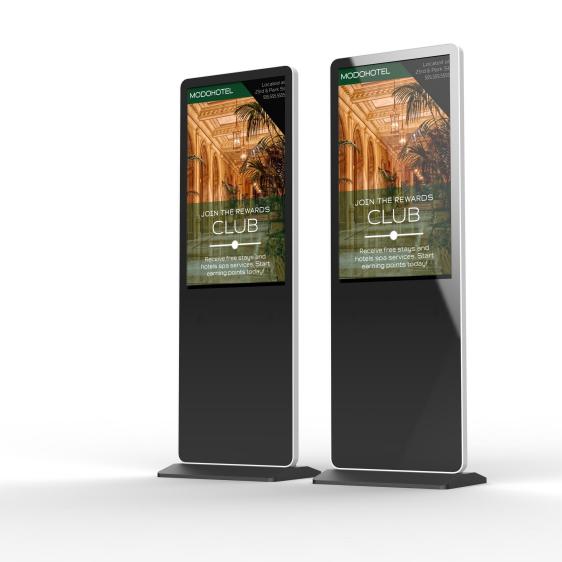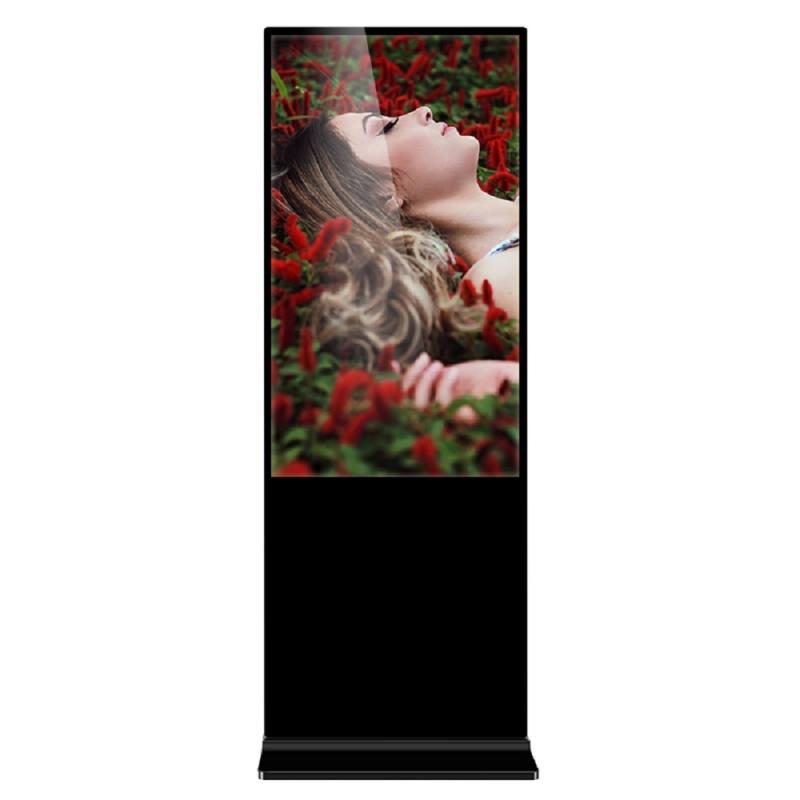
Hardware Components
| Software Components
|
Hospitality: Hotels and resorts often use kiosk displays for check-in/out services, local attractions information, and dining recommendations.
Transportation Hubs: Airports and train stations use kiosk displays for ticketing, flight/train information, wayfinding, and baggage tracking.
Healthcare: Hospitals and clinics utilize kiosk displays for patient check-in, appointment scheduling, and health information.
Education: Schools and universities employ kiosk displays for campus maps, event schedules, and course registration.
Corporate Offices: Offices use kiosk displays for visitor management, room booking systems, and company announcements.
Entertainment Venues: Theme parks, museums, and theaters use kiosk displays for ticket sales, exhibit information, and interactive experiences.
Government Institutions: Government offices use kiosk displays for services such as license renewals, permit applications, and information dissemination.
Banking: Banks deploy kiosk displays for ATM services, account inquiries, and digital signage for promotions.
Food and Beverage: Restaurants and cafes use kiosk displays for self-ordering systems, menu displays, and loyalty program information.


Enhanced Customer Experience: Interactive and user-friendly interface improves engagement and satisfaction.
Operational Efficiency: Automates tasks, reducing staff workload and increasing efficiency.
24/7 Availability: Provides continuous service without staff, ensuring accessibility at all times.
Cost Reduction: Lowers labor costs by handling transactions and information independently.
Valuable Data Collection: Gathers customer interaction data for better business insights.
Increased Revenue: Facilitates upselling and cross-selling through targeted promotions.
Improved Security: Ensures secure transactions and protects sensitive information.

Budget Considerations: Ensure alignment with long-term operational costs.
Usage Scenarios: Tailor hardware and software features to match specific environments.
Security Considerations: Implement robust security features to protect user data and transactions.
Scalability: Future-proof your investment with scalable solutions.
Integration: Ensure compatibility with existing systems.
Regulatory Compliance: Adhere to local and industry standards.
User Experience: Optimize interface for user convenience and accessibility.

Receipt Options: Offer customization for receipt preferences, including the option to print receipts, receive digital copies via email or SMS, or skip receipt printing altogether.
1. Initial Consultation:Step: Contact us to discuss your business needs and goals. Details: Our team will gather information about your specific requirements, including intended use, target audience, and budget. 2. Requirement Analysis:Step: Conduct a thorough analysis of your needs. Details: We evaluate your desired features, design preferences, software needs, and any additional functionalities required. 3. Design Proposal:Step: Receive a detailed design proposal. Details: We provide mock-ups and 3D models of the custom kiosk, incorporating your branding and functional specifications for review and feedback. 4. Customization and Development:Step: Customize the kiosk according to the approved design. Details: Our team develops and integrates the specified hardware components, software, and peripherals to meet your exact requirements. | 5. Prototype and Testing:Step: Build a prototype and perform extensive testing. Details: We create a prototype of the custom display kiosk and conduct rigorous tests to ensure functionality, durability, and user experience meet the highest standards. 6. Final Production:Step: Proceed with full-scale production. Details: Upon approval of the prototype, we move to final production, ensuring all kiosks are built to the agreed specifications and quality standards. 7. Installation and Support:Step: Install the kiosks and provide ongoing support. Details: Our team handles the installation at your location, offers training for your staff, and provides continuous technical support and maintenance services. |
What did our happy clients say?
The display kiosk has revolutionized our customer service. The intuitive interface and sleek design have greatly improved our customer interactions. Installation was seamless, and the support team is always responsive.
We are thrilled with our new display kiosk. It’s incredibly user-friendly and fits perfectly with our store’s aesthetic. Our customers love the convenience, and the data insights have been invaluable for our business.
The outdoor display kiosk we purchased works flawlessly in all weather conditions. It's robust and highly functional, significantly reducing customer wait times. The after-sales support has been excellent.
Our display kiosks have greatly enhanced our retail operations. The customization options allowed us to perfectly match our brand, and the installation was quick and efficient. Highly satisfied with the product and service!